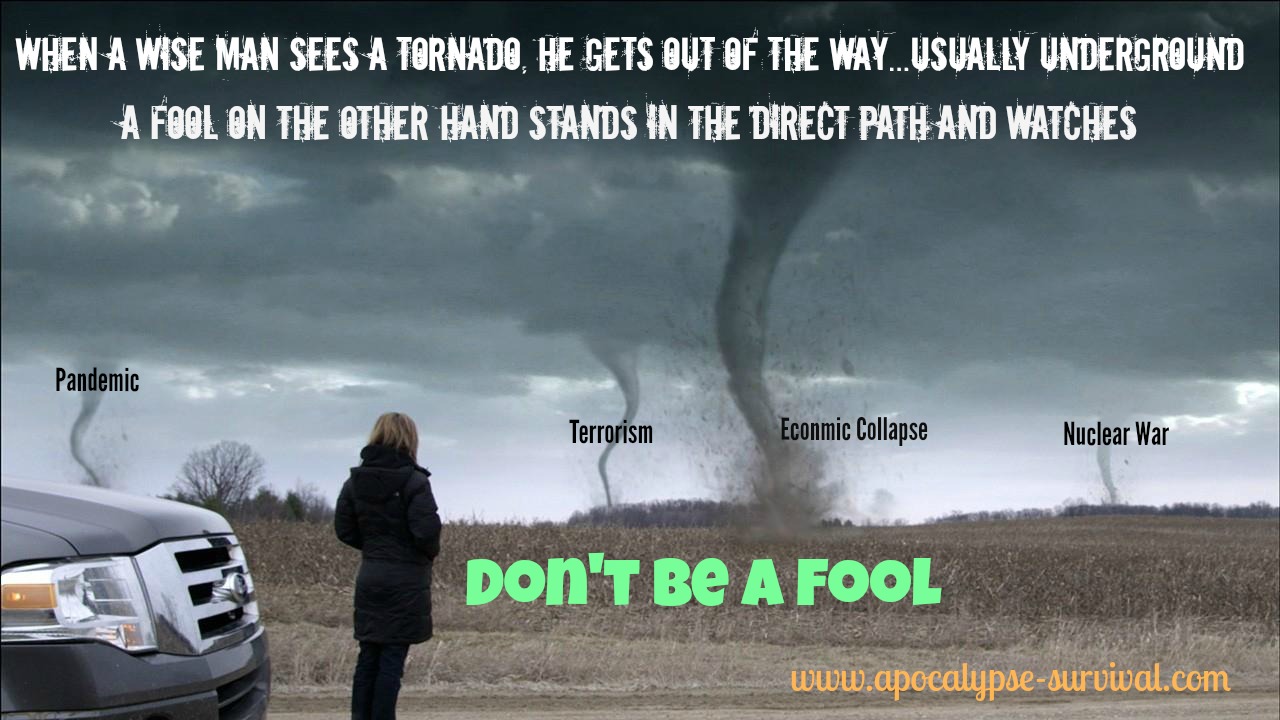Tornado Preparedness : Top Seven Tornado Facts and Why Prepare
Because tornadoes strike violently without warning, knowing about tornado preparedness can potentially save your life and the lives of your family. Frequently occurring in central regions of the U.S. during spring and summer, tornadoes are powerfully spinning pillars of air that have essentially "dropped" down from an active storm supercell, while remaining attached to the thunderclouds.
Tornadoes range from 1/4 of a mile to 1 mile in width and over 50 miles in length. Categorized in numbers 1 through 5, tornadoes are measured using the Fujita scale, which examines the amount of damage done to homes and buildings:
- F0—wind speeds of 40-72 miles per hour. Markham, Ontario, Canada. No damage.
- F1—wind speeds of 73-112 miles per hour. Buildings suffer roof damage, mobile homes overturned. Orchard Beach, New York.
- F2—wind speeds of 113-157 miles per hour. Trees uprooted, homes severely damaged. Killer tornado near Ear Falls, Ontario.
- F3—wind speeds of 158-206 miles per hour. Homes leveled, cars tossed around, dangerous objects projected like missiles. June 1, 2011, F3 tornado tore apart downtown Springfield, Massachusetts.
- F4—wind speeds of 207-260 miles per hour. Homes leveled, cars tossed around, dangerous objects projected like missiles. April 2011, F4/F5 tornadoes rip through and flatten Alabama.
- F5—261+ miles per hour--Widespread devastation, everything basically leveled. Joplin, Missouri, May 2011.
Keeping track of certain weather conditions, such as when humid, warm air collides with cold fronts that generate strong thunderstorms due to extreme temperature changes, is just part of being cognizant of tornado preparedness. Diligently listen to weather reports on the radio and television, as well as for sirens warning of an eminent tornado.
Other useful data concerning tornadoes include:
- Tornadoes can emerge in pairs, with potent supercells possessing the capability of spawning three or more tornadoes in a given region.
- Until a tornado starts to accumulate debris within its funnel, it may appear nearly invisible.
- Tornadoes can drop from thunderclouds at any time with no warning whatsoever.
- Frequently, winds will dramatically decrease just before a tornado strikes.
- The best time for tornado formation is between 3 p.m. and 9 p.m., during the warmest times of the day.
- Skies can be sunny or very dark during a tornado strike.
- Hail often accompanies tornadoes.
Preparations For Tornado Season
In the U.S., tornado season is considered the time between April and July. To facilitate tornado preparedness, individuals with basements or cellars should stock them with necessary food, medical and energy items, since these are the safest places to retreat to during a tornado. Canned goods, bottled water, bandages, flashlights, radios and batteries are all basic things that should be available in the event of a tornado.
During a Tornado
If no basement exists in the home, the safest place is an interior room on the first floor of the building, such as a closet or hallway. Stay away from windows, outside walls and doors and insulate yourself with a thick quilt or mattress to avoid injury from flying debris. The purpose of taking refuge in the middle of a structure is so you have as many walls between you and the outside of the building as possible.
Tornado Preparedness in a Mobile Home
If you become trapped in a mobile home or car and a tornado is bearing down, leave both of these places immediately and go to the nearest storm shelter or sturdy building. Neither a trailer nor a car provides any sort of protection from a tornado, because tornadic winds can easily overturn both and present serious dangers from flying pieces of glass.
When no shelter is available, lie down in a ditch or other depression and place your hands over your head. Contrary to what many people think, hiding under a bridge or overpass is more dangerous because the enclosed area traps debris. If you are caught outside during a tornado, the safest places are flat, low, hollowed-out places.
DIY Tornado Shelters
Naturally, the ultimate in tornado preparedness is constructing your own shelter. Built as part of a home or as an exterior structure, shelters are equipped to withstand the most violent of tornados. Constructed of concrete, steel or wood layers and secured by concrete slabs, tornado shelters have no windows and are reinforced by steel doors generally equipped with deadbolt locks as well.
Return from Tornado Preparedness to Survival Situations
Print This Page






New! Comments
Have your say about what you just read! Leave me a comment in the box below.